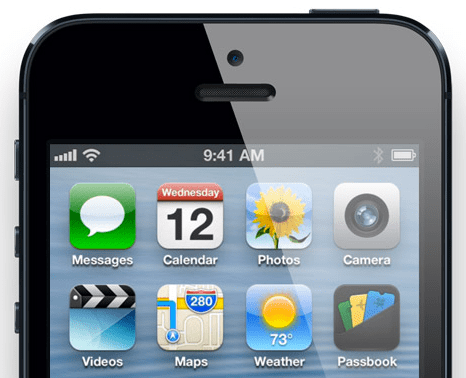In the early days of TechCrunch, Mike Arrington used to share a list of his favorite products – those he couldn’t live without – which he had used over the course of the year. Want to flashback? Check out 2007, 2008, 2009, and 2010. But given that one of the biggest themes in 2012 was mobile, I thought it would be nice to take a moment here at the end of the year to talk about some of my favorite apps of the year, as well as how I use them.
This is not a definitive list of “everyone’s” must-haves. The apps we use and adopt and love are very personal. That being said, while my phone is bogged down with hundreds of apps I’ve used, tested, and keep track of, there are only a handful that are in what I would refer to as “extremely regular rotation.”
Let’s compare notes, shall we?
The Google Suite: My Overall Most-Used Apps
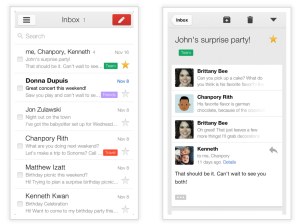 First, we need to get the obvious out of the way: Google. I happen to use an iPhone, but even while I was on Android, it goes without saying that Google’s suite of apps are among the most-used on any device I own. This year, Google updated its Gmail application, and it’s finally a fairly solid product. That being said, I still often find myself returning to Apple’s default Mail.app, because it’s native and I’ve grown comfortable with the experience over the years. It’s almost like a bad habit that I have to break, and so far, I’m failing to fully make the switch (even with new apps like Mailbox on the horizon). But having Gmail’s notifications via the iOS app is incredibly useful, and I’d install it just for that.
First, we need to get the obvious out of the way: Google. I happen to use an iPhone, but even while I was on Android, it goes without saying that Google’s suite of apps are among the most-used on any device I own. This year, Google updated its Gmail application, and it’s finally a fairly solid product. That being said, I still often find myself returning to Apple’s default Mail.app, because it’s native and I’ve grown comfortable with the experience over the years. It’s almost like a bad habit that I have to break, and so far, I’m failing to fully make the switch (even with new apps like Mailbox on the horizon). But having Gmail’s notifications via the iOS app is incredibly useful, and I’d install it just for that.
![]() Google Maps is another no-brainer, of course. Google’s Maps are the best in the business, and I love the care that has gone into the new Maps app, especially the use of gestures. But I have to admit that in the time between the launch of iOS 6 and the arrival of Google Maps in the App Store, Waze’s excellent maps app inched its way back to my homescreen, where I was reminded of its active, engaged community of drivers looking out for traffic jams, accidents and speed traps. The Apple Maps debacle gave me a chance to re-engage with Waze, but I don’t know how long that will last in 2013, now that Google has returned.
Google Maps is another no-brainer, of course. Google’s Maps are the best in the business, and I love the care that has gone into the new Maps app, especially the use of gestures. But I have to admit that in the time between the launch of iOS 6 and the arrival of Google Maps in the App Store, Waze’s excellent maps app inched its way back to my homescreen, where I was reminded of its active, engaged community of drivers looking out for traffic jams, accidents and speed traps. The Apple Maps debacle gave me a chance to re-engage with Waze, but I don’t know how long that will last in 2013, now that Google has returned.
Other Google musts for me are pretty obvious, and I don’t think we need to spend a lot of time discussing why: Search, YouTube, Reader, Voice, Local, Latitude (yes, I use it, but only with family as a free family locator service), Drive and Chrome. Google+’s iOS app is well-built, but I still do most of my socializing on Facebook, which is…
The Runner-Up For Most-Used App Suite?
Facebook, of course, including Facebook Camera and Messenger. Also, Instagram, if you’re counting it. I’m not sure what will come of Facebook’s newest app Poke.
Let’s move on to something more interesting.
Utility: CloudMagic
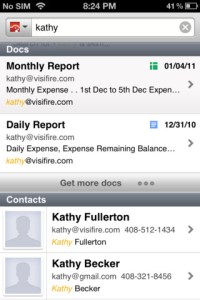 This personal data search engine app lets me quickly search through emails, contacts, files and updates from other online services faster and easier than any default app does.
This personal data search engine app lets me quickly search through emails, contacts, files and updates from other online services faster and easier than any default app does.
I use it daily to track down contact info and emails for the most part. When you have a bogged-down inbox, it’s actually easier to query for the email you need like this, rather than scroll through a message list. That’s not all the app does, but it’s one of my top use cases for it, which is why it’s one of the few apps from a startup that’s actually on my homescreen.
Community: Instagram
Despite the company’s recent bungled attempts at updating its Terms of Service (We’ll sell your photos! Just kidding!), I still enjoy using this app. But for me it’s not only about sharing my photos – which aren’t really that interesting – it’s also about browsing through those shared by others, and seeing slices of other cities and other lives. It’s a transporting experience.

There are those out there who are falling out of love with the service, but it’s hard for me to abandon something which is a touchstone of today’s Internet culture. We’re just now starting to see the shift in photo-sharing that comes from an audience of newly-turned adults who grew up with smartphone in hand. This space isn’t dead. It’s not boring, either, with apps like Cinemagram and Snapchat proving that tech reporters and bloggers may not always be clued into trends, but that doesn’t mean photo-sharing innovation is over. (In fact, it might just mean you’re getting old.)
Which leads me to another photo-sharing favorite in 2012…
Photos: Flock
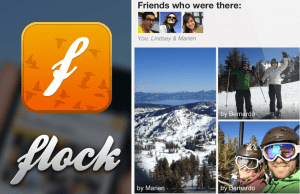 I’ve been sufficiently intrigued enough by this app to go around installing it on family members’ phones and evangelizing it to others. The app, which lets users share photos in private groups, automatically organized by time and location, is not perfect – there’s still too much manual labor involved in sharing. But it’s the closest one to really nail the overall experience in terms of design, user interface, flow, and feature set. (Well, at least on iOS – I’m less impressed with the Android version.)
I’ve been sufficiently intrigued enough by this app to go around installing it on family members’ phones and evangelizing it to others. The app, which lets users share photos in private groups, automatically organized by time and location, is not perfect – there’s still too much manual labor involved in sharing. But it’s the closest one to really nail the overall experience in terms of design, user interface, flow, and feature set. (Well, at least on iOS – I’m less impressed with the Android version.)
The app actually keeps things fairly simple and straightforward, which is why I’ve even managed to get my in-laws on it. (Yes, grandparents!). But it needs a “trusted friends” feature, which would allow the option of real automatic photo sharing with select friends. That way I wouldn’t have to continue to tap people on the shoulder and remind them to please share their photos. Because really, if I have to do that, I may as well ask for photos via email or text.
Sharing & Discovery: Tumblr
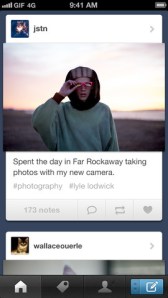 Tumblr’s iOS app has also been improved over the course of 2012, and its updated layout and user interface has made the app a great tool for mobile blogging, but also exploring online communities, tags, photos (gifs!), and other surprising, funny, and shareable content. I’m not bored a lot, but when I am, Tumblr is often a better place to waste time than Facebook is because it’s not about your friends, who can be really annoying, it’s about interesting things.
Tumblr’s iOS app has also been improved over the course of 2012, and its updated layout and user interface has made the app a great tool for mobile blogging, but also exploring online communities, tags, photos (gifs!), and other surprising, funny, and shareable content. I’m not bored a lot, but when I am, Tumblr is often a better place to waste time than Facebook is because it’s not about your friends, who can be really annoying, it’s about interesting things.
Twitter tries to claim the interest graph, but Twitter these days is more about tracking the news for me (I follow news sources and techie folks, not celebs and bffs, so that doesn’t help). That being said, Twitter’s experience lends itself to “this just happened,” not the more personal sharing and creativity found on Tumblr. Twitter can claim my interest graph all it likes, but it falls short.
In all fairness, I’m sure I actually launch Twitter on mobile more than I launch Tumblr, but if you added up the time spent in each app afterwards, I think Tumblr had the edge. I might not visit daily, but each trip is fairly long.
I know Pinterest made a strong showing this year, but in terms of mobile, its app doesn’t do it for me. I prefer Pinterest’s online experience – big, browseable, clickable imagery. On mobile, it tries to reproduce that pinboard feel with two columns, but this makes images hard to see. For shared infographics, comics, and quotes, it’s nearly impossible to read them without tapping through. I don’t like the disappearing navigation, either, or the fact that it puts a camera button front-and-center. Look around Pinterest and you’ll see that people aren’t sharing their personal photos there – they’re re-sharing from the web. The camera option just doesn’t make sense as being the key feature for Pinterest mobile.
Music: Um, All Of Them?
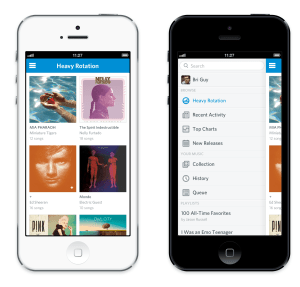 This category is tough for me. A lot of people would say Spotify is the hands-down winner of the year. In terms of sheer user numbers, it’s there already, I suppose, when compared with its closest competition. But I’ve switched from music app to music app throughout the year, including MOG, Spotify, Rdio, Pandora, SoundCloud, and others. I don’t feel a particular affinity for any of them, if I’m being honest. Spotify has successfully leveraged social, which put it ahead. When you’re young and/or super-interested in the newest, hottest bands, the social angle matters, which is why Spotify getting it right on Facebook means it can win.
This category is tough for me. A lot of people would say Spotify is the hands-down winner of the year. In terms of sheer user numbers, it’s there already, I suppose, when compared with its closest competition. But I’ve switched from music app to music app throughout the year, including MOG, Spotify, Rdio, Pandora, SoundCloud, and others. I don’t feel a particular affinity for any of them, if I’m being honest. Spotify has successfully leveraged social, which put it ahead. When you’re young and/or super-interested in the newest, hottest bands, the social angle matters, which is why Spotify getting it right on Facebook means it can win.
But like I said, this is a personal list. I don’t do the Open Graph on Spotify – our family shares a music account (as we do on iTunes…shhh). Maybe that’s naughty, but it also means that the husband’s classic rock and dubstep preferences (ugh, I know, right?) as well as the toddler’s Sesame Street jams would be attributed to me. On Facebook. Where I have an image to maintain. The horror! That being said, I want to take more advantage of Spotify’s social features in terms of music discovery, which means I need to make a decision this year: continue to bounce around services, or go all in on one? (See also: my 2013 New Year’s Resolutions).
I have to add one more thing here: I think 2013 might have a surprise in store, too. Do you know where the kids are still sharing their music these days? Dropbox. I think it’s going to be very interesting to watch what Dropbox is up to this year, considering its acquisitions of other music and photo-sharing startups in 2012. Also, don’t count out Apple – it might show up late, but it could easily win streaming users back if it doesn’t screw up like it did with Ping.
Shopping: Amazon (Obviously!), But Also Poshmark & ThredUP
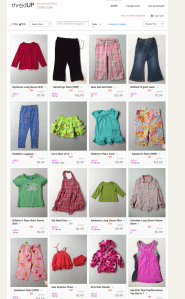 The truth is, I really do love what Fab’s doing on mobile, but buying from Fab is more of a luxury for me, which means Fab is not a most-used app, it’s just a favorite. Today, the majority of my online shopping is the day-to-day stuff, and there, Amazon is still the one to beat. Huge inventory, fast shipping, one-click impulse buys, wish lists, and Kindle books, and you can even auto-schedule purchases of regularly used items. Like tampons. Seriously. This is handy. But Amazon is a no-brainer choice, so…
The truth is, I really do love what Fab’s doing on mobile, but buying from Fab is more of a luxury for me, which means Fab is not a most-used app, it’s just a favorite. Today, the majority of my online shopping is the day-to-day stuff, and there, Amazon is still the one to beat. Huge inventory, fast shipping, one-click impulse buys, wish lists, and Kindle books, and you can even auto-schedule purchases of regularly used items. Like tampons. Seriously. This is handy. But Amazon is a no-brainer choice, so…
For me, 2012 has been the year of really starting to use online consignment. There are a few companies operating in this space, but Poshmark and ThredUP were those I used the most, the former for shopping in the closets’ of others, and the latter for both selling and buying kids’ clothes. ThredUP will be moving into other verticals (teens, adults, etc.) in the months ahead, so it’s possible that it could one day become even a more go-to service for me. (If it makes it.)
News: Alien Blue (A Reddit App)
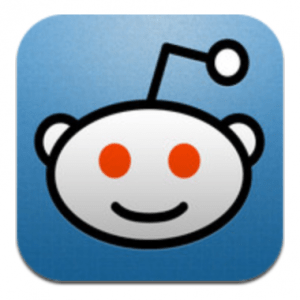 You thought I’d say TechCrunch, right? Well, of course, TechCrunch’s app. But this list isn’t about self-promotion.
You thought I’d say TechCrunch, right? Well, of course, TechCrunch’s app. But this list isn’t about self-promotion.
Anyway, Reddit in 2012 really proved itself as a good filter for real-time news, especially when the news outlets, in a rush to be first, get things wrong. One of the more remarkable things, though, about reading news on Reddit is the community. No matter the topic, someone there eventually chimes in with their personal experience – I know that guy, that’s my hometown, I saw this too. It’s the citizen journalism that the news orgs wish was happening on their own websites. Reddit played a major role in the election cycle as well, as even President Obama (or rather, his social team) acknowledged by hosting a Q&A on the site.
There are a few Reddit apps out there on iTunes, but I prefer Alien Blue, which I happily upgraded to Pro.
Media: Netflix
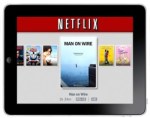 I know, another obvious choice, but it’s accurate. Netflix made some big mistakes in 2011, in attempting to split its DVD business and its streaming business, but that didn’t impact our usage patterns at home. We didn’t get angry and cancel our service, though some others did. Nothing changed for us between the Qwikster PR disaster of 2011 and the recovery period in 2012.
I know, another obvious choice, but it’s accurate. Netflix made some big mistakes in 2011, in attempting to split its DVD business and its streaming business, but that didn’t impact our usage patterns at home. We didn’t get angry and cancel our service, though some others did. Nothing changed for us between the Qwikster PR disaster of 2011 and the recovery period in 2012.
Netflix is still used nearly daily here, if you count the kid’s usage in our family’s totals, which you may as well. The streaming library still isn’t on par with the DVD selection, which is one of the reasons why it was premature to try to separate the two businesses. But Netflix’s move into original content is promising. One day, hopefully, you won’t need to have access to the DVD library in order to have something of quality to watch in your downtime. Is the quality there today? No, far from it. Netflix’s original series Lilyhammer was OK, but not HBO-level great. But it’s only a matter of time before the content selection improves. Arrested Development, the world awaits. I plan to watch.
Work: Skype, Evernote And Dropbox
Skype, now Microsoft-owned, is a utility. I couldn’t give up Skype any more than I could not have a cell phone or an Internet connection. But again, this is another obvious choice.
 The more interesting selection in this work-related category is Dropbox. And it’s not even that I personally turn to Dropbox for my own work, so much that Dropbox is thrust upon me. Since I’m more often the recipient of files than I am their creator, it’s interesting to see the transition from .zip files and email attachments to Dropbox at the companies I communicate with. Towards the beginning of the year, it was business as usual – emails with files attached. But by the end of 2012, it seemed like every other email included a Dropbox link pointing instead to an online collection of files. (Anecdotal evidence of Dropbox’s growing influence? Sure, but this whole list is anecdotal, folks.)
The more interesting selection in this work-related category is Dropbox. And it’s not even that I personally turn to Dropbox for my own work, so much that Dropbox is thrust upon me. Since I’m more often the recipient of files than I am their creator, it’s interesting to see the transition from .zip files and email attachments to Dropbox at the companies I communicate with. Towards the beginning of the year, it was business as usual – emails with files attached. But by the end of 2012, it seemed like every other email included a Dropbox link pointing instead to an online collection of files. (Anecdotal evidence of Dropbox’s growing influence? Sure, but this whole list is anecdotal, folks.)
Meanwhile, Evernote remains my preferred note-taking and clipping solution over Office/iWork/Notepad/OneNote, etc. Since I’m usually online, I just use the web app. I don’t think I’ve launched the desktop version but a handful of times, if I’m being honest.
Because I use all three of the services so much for work purposes on the web, they have, by extension, become must-have downloads on mobile, too. That’s interesting when you stop and think about it. In these cases, it’s not about being mobile-first or mobile-only, it’s about wrapping in mobile as an important part of an overall, cross-platform strategy.
Honorable Mentions
I’m skipping games here, as well as the travel category, the latter of which doesn’t include most-used apps, but rather apps that are heavily used in spurts, then abandoned until the next trip. The one exception to that may be TripIt, since it’s also the app people use when sharing their travel plans with me.
There are plenty of other apps that should be on a year-end list, and are likely on many others’ lists. I can’t say that these were my most-used apps, but these are either: a) too important to skip, b) borderline most-used, or c) saw increased usage in 2012.
These include:
LinkedIn, Uber, Airbnb, Flipboard, Sincerely (app suite), flickr, Tango, HBOGO, SoundCloud, Square, PayPal, Fab, OpenTable, Yelp, Quora, BuzzFeed, Cobook, Cinemagram, SnapChat, Pic Stich, Twitter (which was sort of mentioned above), Kindle, Starbucks, Shazam, Groupon, LivingSocial, Camera+, iMovie, Amazon Instant, Pandora, NYT, WSJ, Paper, Hulu, Plus, Flixster, Fantastical, WhatsApp, Flashlight, Summly, Craigslist, Pocket, The Weather Channel
What Does This Tell Me?
Maybe my most-used list is a little boring? A number of the companies I use the most on mobile are those I’ve used the most on the web for many years. Shouldn’t mobile open up the door to a whole new breed of innovators to come in with their mobile-first experiences? Yes, it should. But becoming an Instagram-level hit on mobile is clearly easier said than done. (See also: Path, Foursquare.)
Now, I could have gone out of my way to find an early-stage startup to feature in each category, but I’m trying to be honest here. Many of the apps I use the most aren’t the unknowns, but rather the big-name web brands that have managed to become a part of my daily life. That’s why today’s top headlines are all about the big co’s – the news is simply mirroring real-world adoption trends.
Still, looking back at the list, I’m a little disappointed that there weren’t more surprises in there. I hope that changes in 2013.
